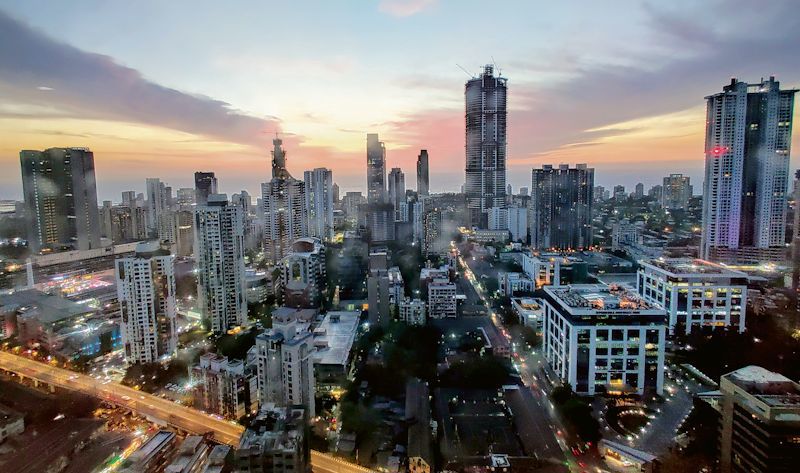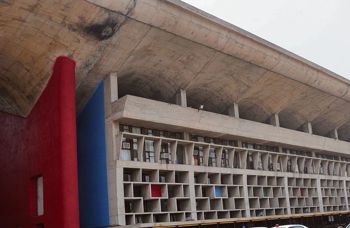
Shift: From the 2010s, the Indian economy has increasingly gone into the hands of monopoly capital — big conglomerates echoing the Zaibatsus and Chaebols of Asian capitalist powers. iStock
Aunindyo Chakravarty
Senior Economic Analyst
LET me begin with a provocation — the Congress ceased to be a national party in 1998. If it came to power in 2004 and then consolidated its hold five years later, it was because it represented regional aspirations.
To understand this, we need to perform a couple of thought experiments. Imagine that, in 2004, Chandrababu Naidu and his party’s ally, the BJP, had managed to hold on to their numbers in Andhra Pradesh. Then, the Congress would have slid to become the second largest party, down to 121 seats, the BJP would have risen to 145, and the NDA would have got 220 seats across India.
Now, imagine that the BJP had decided to stick with the DMK in 2004 and not align with Jayalalithaa’s party. As it turned out, the decision to switch allies in Tamil Nadu cost the NDA dear: The AIADMK was extremely unpopular, and the DMK-Congress alliance swept all 39 seats in the state. If the BJP had held on to the DMK, there was a chance that the NDA could have swept the state.
Andhra Pradesh and Tamil Nadu effectively changed the course of Indian politics in 10 years. If they had held on to the NDA, its all-India tally would have been 239 seats, and Atal Bihari Vajpayee would have returned to power. The Congress would have dropped to 111 seats, lower than what it had got in 1999, and perhaps, its decline would have been hastened by a decade.
Why have I chosen these two southern states? Because they tell an important story about India’s political economy — how it evolved in the post-liberalisation period and changed the fortunes of India’s grand old party. A big part of this was the rise of new entrepreneurial groups, which were hitherto unable to make a dent during the ‘licence quota Raj’.
Economic journalist Harish Damodaran has chronicled the change that took place in the composition of ‘India’s New Capitalists’ and showed how new caste-communities were able to break through the monopolistic grip of the traditional mercantile groups from the mid-1990s. Each of these ‘new capitalists’ emerged within the domestic markets of their states. Leading the charge were the Andhra capitalists — the Kamma, Reddy, and Raju entrepreneurs — who had initially made money in local enterprises, and then expanded into infrastructure during Chandrababu’s rule.
In 2004, a section of the entrepreneurial class in Andhra Pradesh switched its allegiance to YS Rajasekhara Reddy (YSR), who swept to power and gave the Congress its largest contingent of MPs. Andhra Inc became the biggest infrastructure and power companies during UPA-1 — GMR, GVK, Lanco, IVRCL, Gayatri Projects, to name a few. The grapevine in the corridors of power those days was that the rise of the captains of industry from Andhra Pradesh was a testimony to YSR’s clout in New Delhi.
The rise of Tamil entrepreneurs was less spectacular but equally significant. Tamil Nadu has been recognised as one of India’s most business-friendly states, even if the overt political rhetoric of the main Dravidian parties has been left of centre. As early as 1996, a report of the National Council of Applied Economic Research had ranked the state as the most reform-oriented. John Harris and Andrew Wyatt’s research shows that successive governments in Tamil Nadu have favoured a private sector-led development model, which has ensured a stable two-party political system. The so-called ‘national’ parties are entirely dependent on what the DMK or AIADMK is willing to give them.
The new ‘regional’ capitalists who emerged during the late 1990s could still not have competed with the traditional mercantile-industrial caste-communities, had it not been for the massive financial bubble that developed across the world from the early 2000s. In India, new entrepreneurs got access to PSU bank funds, partly because of their growing heft in the corridors of power. But the stock market boom of 2005-08 also allowed them to raise money from the public. This led to an unrealistic credit-fuelled investment boom in infrastructure, steel and power, which came a cropper once the global financial crisis of 2008-09 caused a collapse of valuations. These companies, which lived off their market capitalisation, as opposed to real earnings, suddenly found that they could no longer raise funds to finance their operations. The result was what came to be known as India’s NPA (non-performing assets) crisis, where mega loans given by banks turned bad.
By 2011-12, many of the biggest ‘new capitalists’ unravelled under the weight of their debt burdens. Banks took over their assets and sold them to big companies with secure profits and big piles of cash reserves. What resulted was a massive consolidation in almost every industry. Babus and bankers who had cleared projects or granted large loans came under the scanner as companies began to collapse around them. The response from the bureaucratic-managerial class was to withdraw into its shell, refusing to clear files or expedite project finance. The media gave this a name — ‘policy paralysis’. Coincidentally, this was also the time when big business expanded its control over the news media by beginning to pick up stakes in media companies.
The pricking of the credit bubble also burst the ‘new capitalist’ balloon that had threatened to overwhelm ‘old’ capital in the 2000s. From the 2010s, the Indian economy has increasingly gone into the hands of monopoly capital — big conglomerates, echoing the Zaibatsus and Chaebols of Asian capitalist powers.
Could the Congress have ridden this wave? After all, it had strong ties with old business houses since the time of the ‘licence quota Raj’. This is where leadership made a difference. Rahul Gandhi’s image of being anti-business and pro-poor naturally made him suspect in the eyes of India’s capitalist class. In contrast, Narendra Modi successfully projected the image of being a business-friendly leader. As early as January 2009, corporate honchos like Sunil Bharti Mittal and Anil Ambani had said that Modi had the qualities to lead the nation. India Inc chose to back Modi, and it has had no cause to regret its decision.
Join Whatsapp Channel of The Tribune for latest updates.




























